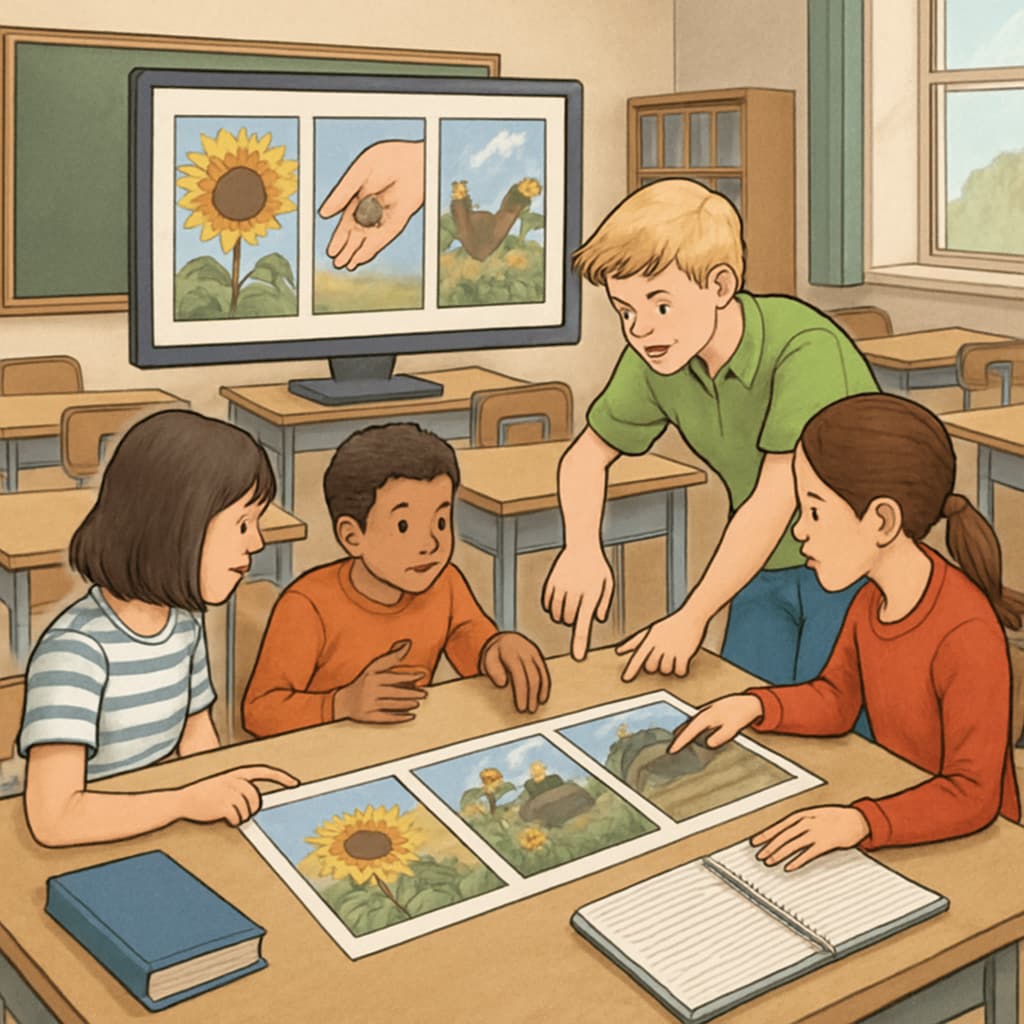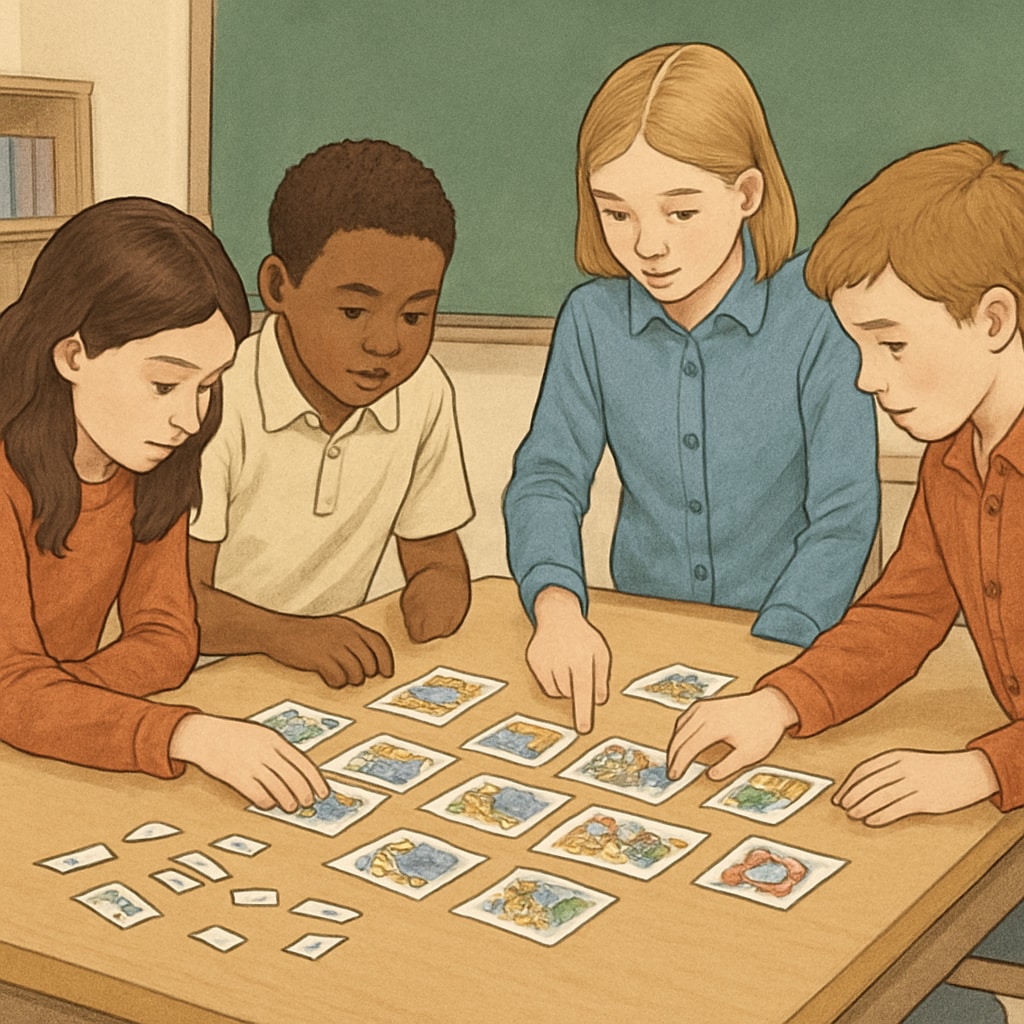The Zoom and ReZoom teaching activities are innovative tools designed to enhance students’ visual thinking and logical reasoning skills. These activities invite participants to piece together a visual narrative through a series of interconnected images, fostering engagement and cognitive development without relying on standard answers. Educators often ask how to effectively implement these activities and guide students in finding answers, which is precisely what this article will address.

Understanding Zoom and ReZoom: A Primer
Zoom and ReZoom are interactive books or activities centered around sequential images. In Zoom, participants work with images that progressively zoom out, revealing a broader context with each turn of the page. ReZoom reverses the process, zooming in to uncover hidden details. These activities encourage students to think critically and collaboratively as they analyze visual clues and deduce connections between images.
Both activities are ideal for group settings, as they promote teamwork and communication. They are also versatile, suitable for a variety of age groups, and can be tailored to specific educational goals. For example, educators can use Zoom and ReZoom to teach storytelling, problem-solving, or even concepts of scale and perspective.
How to Implement Zoom and ReZoom Activities Effectively
To successfully integrate Zoom and ReZoom into your teaching practice, follow these steps:
- Preparation: Familiarize yourself with the Zoom or ReZoom book. Understand the sequence of images and their intended narrative.
- Setting Objectives: Define clear learning goals, such as improving visual literacy, fostering collaboration, or enhancing logical reasoning.
- Organizing Groups: Divide students into small groups to encourage teamwork. Assign roles, such as observer, narrator, and connector, to ensure active participation.
- Facilitating the Activity: Provide each group with a shuffled set of images. Encourage them to discuss and arrange the images to form a coherent story.
- Debriefing: After the activity, lead a discussion about the strategies used, challenges faced, and insights gained. Highlight the importance of perspective and context in problem-solving.

Strategies for Finding Answers Without a Standard Key
One of the challenges educators face is conducting Zoom and ReZoom activities without a standard answer key. However, this aspect can be turned into a strength, as it encourages open-ended thinking. Here are some strategies to guide students:
- Focus on Connections: Emphasize the relationships between images rather than seeking a “correct” order.
- Encourage Dialogue: Facilitate discussions where students justify their choices and listen to others’ perspectives.
- Use Clues: Provide hints or prompts to steer students toward key observations without giving away answers.
- Celebrate Creativity: Recognize unique interpretations and creative solutions, reinforcing the idea that multiple answers can be valid.
For educators seeking structured guidance, exploring external resources can be beneficial. For example, Visual Thinking on Wikipedia offers insights into the cognitive processes involved, while Visual Literacy on Britannica provides additional context on the importance of interpreting visual information.
Benefits of Zoom and ReZoom Activities
These activities offer several educational benefits, including:
- Enhanced Visual Thinking: Students learn to interpret and connect visual clues, improving their ability to think critically.
- Improved Collaboration: Group-based activities foster teamwork, communication, and mutual respect.
- Creative Problem-Solving: Open-ended tasks encourage students to think outside the box and explore multiple solutions.
- Engagement and Fun: The hands-on, interactive nature of Zoom and ReZoom keeps students motivated and invested in the learning process.
Incorporating these activities into your curriculum can transform your classroom into a dynamic space for exploration and growth. By guiding students through the process and encouraging creativity, educators can make Zoom and ReZoom a cornerstone of visual literacy education.
Readability guidance: Use short paragraphs and lists to summarize key points. Ensure clarity by minimizing passive voice and long sentences. Distribute transition words evenly throughout the text for better flow.


